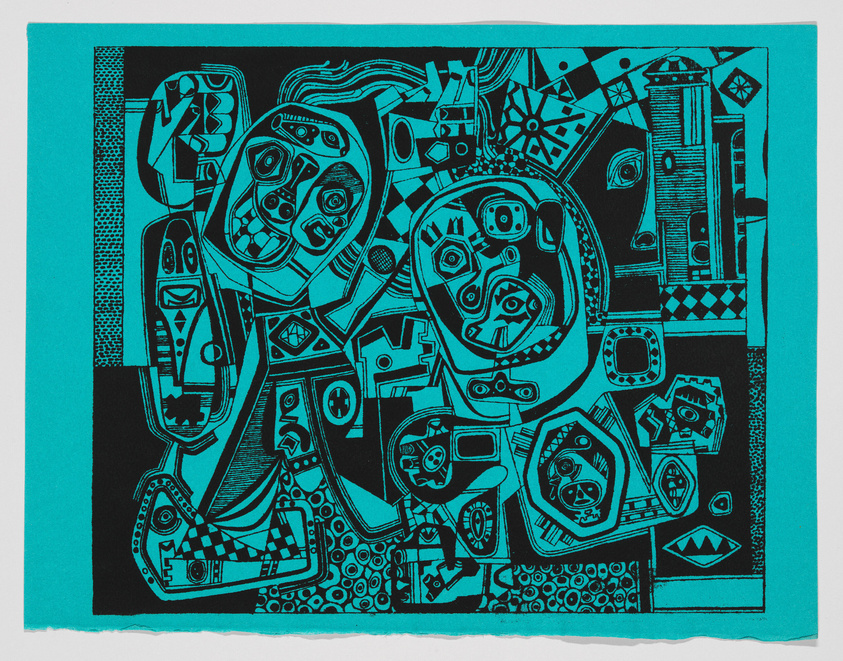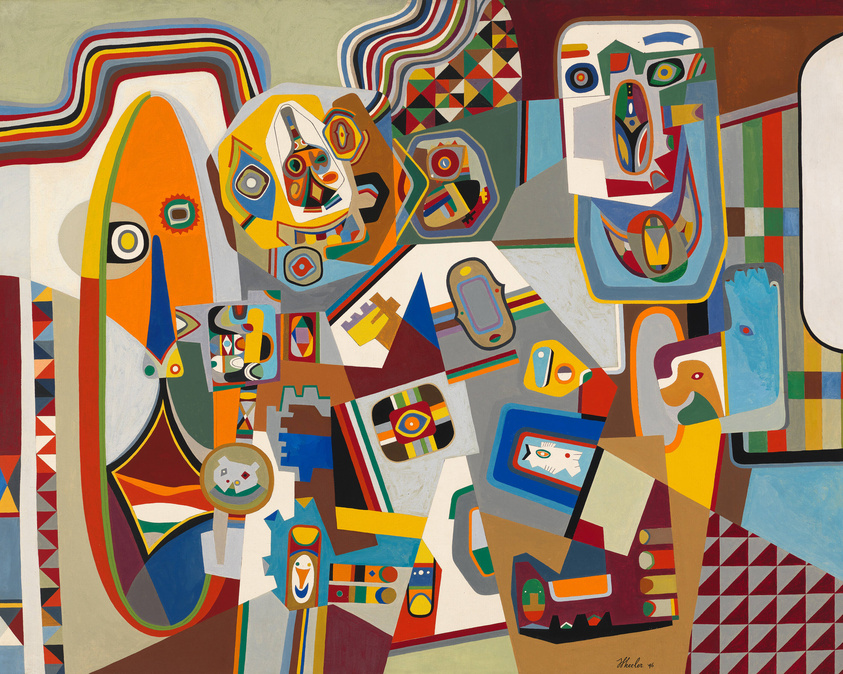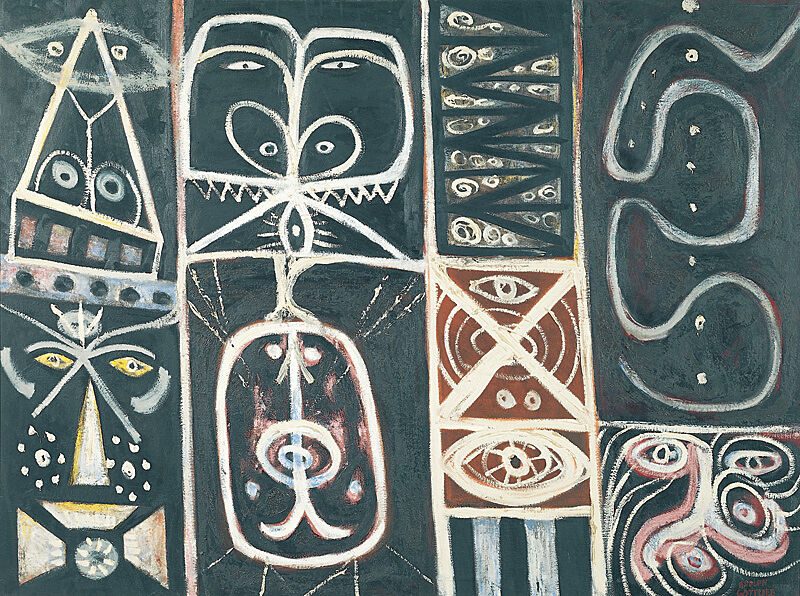Steve Wheeler, Laughing Boy Rolling, 1946
July 10, 2012
0:00
Steve Wheeler, Laughing Boy Rolling, 1946
0:00
Narrator: Steve Wheeler’s Laughing Boy Rolling is punctuated with mask-like faces. Look closely at the large one near the upper right. The nose, mouth, and brow are each so complexly patterned that they’re like paintings within paintings. As you look around the canvas, you’ll see a number of these areas—details that draw you in, and then in again and again. There’s no overall landscape or narrative that relates each of these elements to the others. Yet it all hangs together, knitted into a cohesive composition by the painting’s tightly patterned surface.
Many of the individual features in Wheeler’s paintings resemble aspects of Native American painting, pottery, and textiles. Wheeler is often associated with a movement known as Indian Space Painting. As the name suggests, the group’s inspiration came not only from the surface appearance of masks or totems, but from the use of space in Native American Art. Here, Wheeler has adapted its all-over patterned ordering so that distinctions between objects and backgrounds are difficult—even impossible—to make. Pay attention to one element of the painting and those nearby seem to recede. Shift your focus and the whole composition seems to move in response.
European artists had also attempted to break down the distinction between figure and ground—particularly following Cubism. Looking to Northwest Coast art gave Wheeler a new way to approach these problems, one that would be uniquely and authentically American.
In Signs & Symbols.



